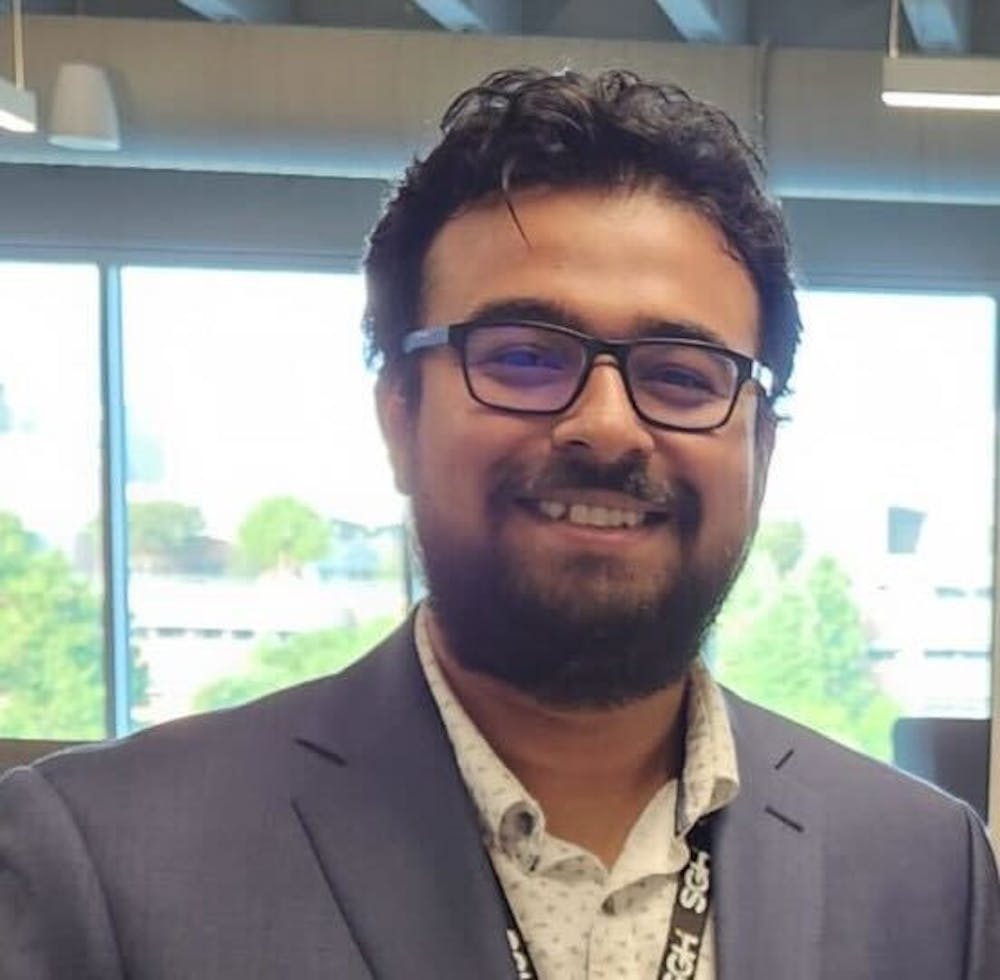Saikat Dan is a research fellow affiliated with the Computational Mechanics Research Laboratory (CMRL) and is advised by Somnath Ghosh in the Civil Engineering Department. As a PhD student this past fall, he taught a HEART course titled Computer Simulations: How Real are They? in which he gave a high-level overview of the field as well as applications of his research.
Composites are materials with distinct phases such as particle, fiber and matrix and are pivotal in various industries, but they are susceptible to damage under certain environmental conditions. Dan's research aims to simulate and understand these damage mechanisms, providing invaluable insights into why such failures occur.
"There are two primary steps in my research. The first part of the task involves simulating the way a material fails when it is exposed to some sort of environmental condition,” Dan said in an interview with The News-Letter. “The second part of the task involves trying to understand — before the material fails — where it is going to fail so that we can find ways to prevent that from happening.”
Dan's current project centers on modeling the failure of composite materials under mechanical deformation. This interdisciplinary project leverages the power of high-performance computing and machine learning.
"It's a fascinating problem. To [calculate these deformations], we use computing facilities from Advanced Research Computing at Hopkins for calculations and implementing sophisticated machine learning networks, making this research both challenging and exciting," he said.
The primary application of Dan's work lies in the aerospace industry with funding from the Air Force Office of Scientific Research. In one of his recent projects related to predicting material failure, he observed an intriguing phenomenon.
“For the material that I am specifically working on, it turns out that to know whether a particular material is going to fail or it is going to have some sort of damage is based on two things. First is how the material looks when it is not damaged. That is one essential feature we did not assume would play an important part initially,“ Dan said. “The second thing is how accurately we can measure certain signals at a very faraway point, which I did not think would be possible at first... It’s pretty cool, and we might be able to predict damage in ways we hadn't imagined."
Dan's hypothesis is rooted in fracture mechanics, a field with a strong mathematical foundation. He believes that understanding the correlation between responses at different points, based on the initial state of the material, can lead to more accurate damage predictions.
The integration of machine learning has transformed the field, making previously intractable problems more manageable and opening new avenues for exploration. Dan views computational mechanics as a field that is both mature and evolving.
“We have a grasp of the general tools, but there are still longstanding problems for which novel solutions continue to emerge,” Dan said.
Concluding the interview, Dan reflected positively on his experience as a graduate researcher. He encourages undergraduate involvement in research, emphasizing that one doesn't need extensive background knowledge to utilize commercial tools.
"Research is challenging, with more failures than successes," he admits. "But it's also exciting, and I would encourage more students to join in the pursuit of discovery."
Dan's journey in computational mechanics highlights the dynamic nature of research and the potential for innovative solutions to longstanding challenges. His work advances our understanding of composite materials and inspires the next generation of researchers to delve into the fascinating world of computer simulations.





